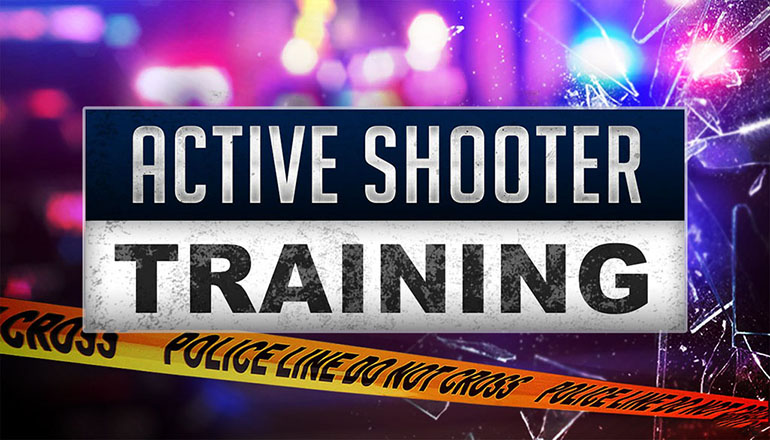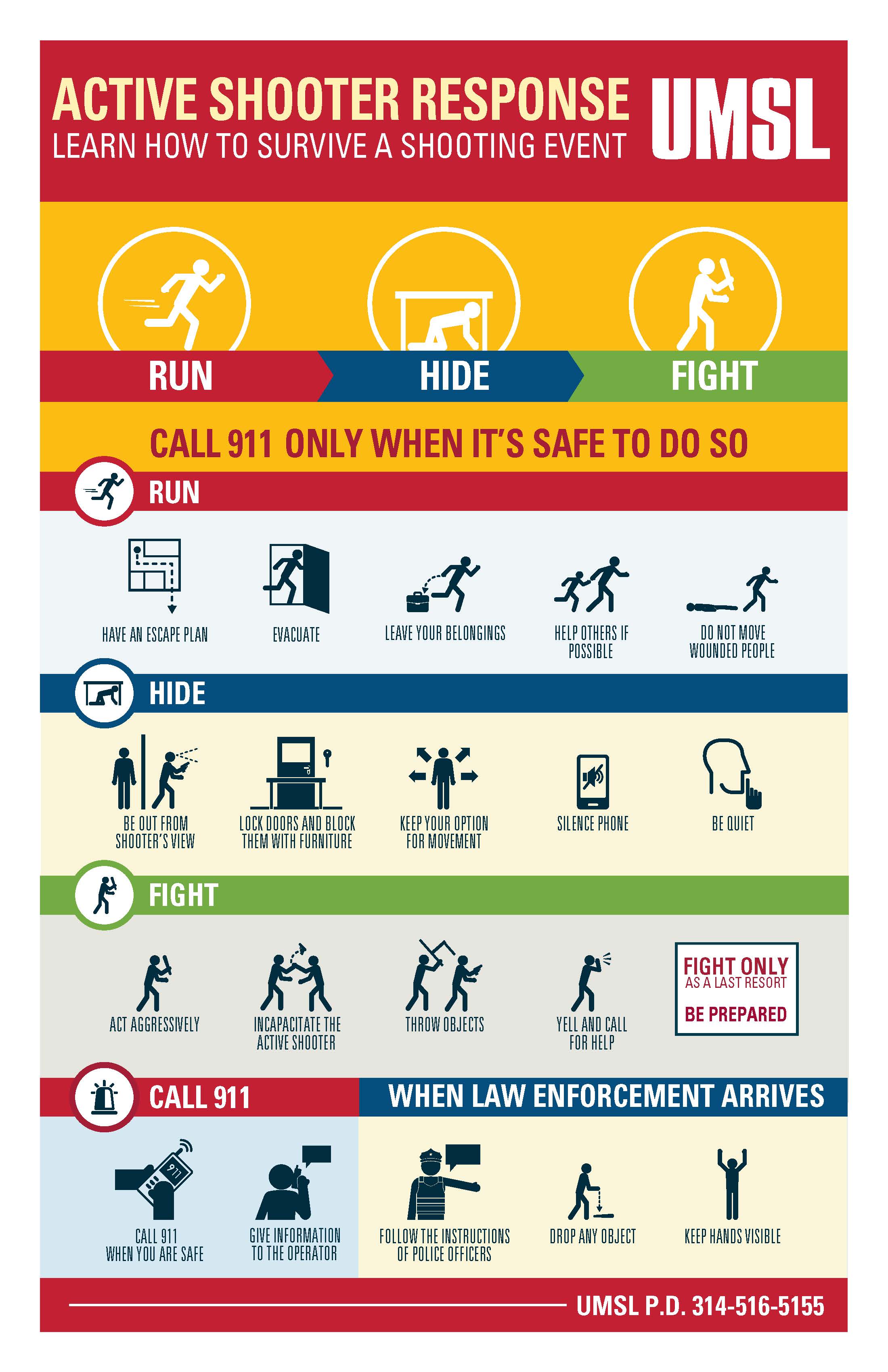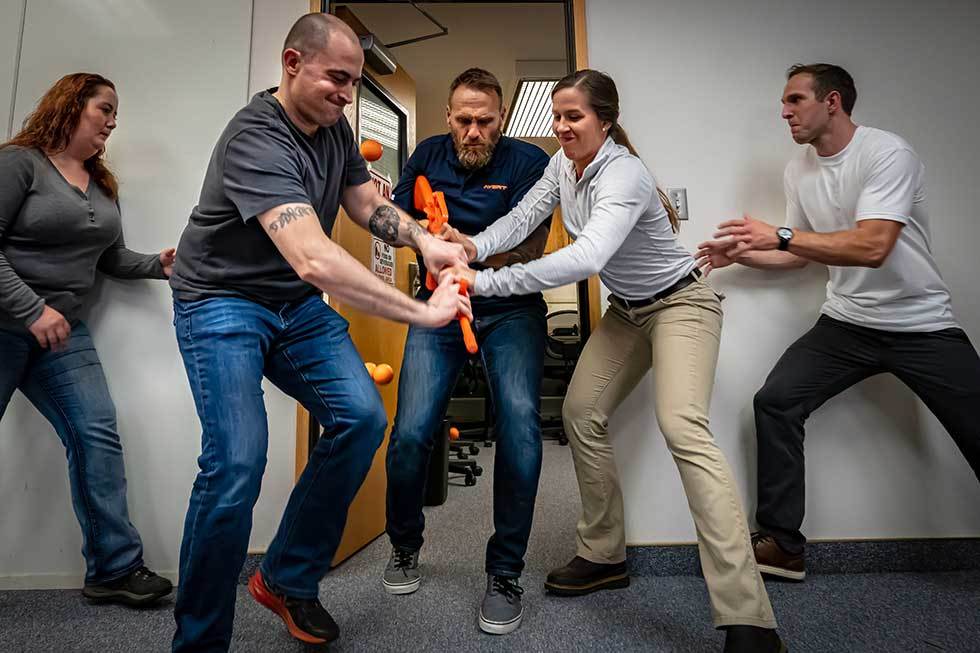Why Active Shooter Training Is Vital for Workplace Safety
Why Active Shooter Training Is Vital for Workplace Safety
Blog Article
The Vital Duty of Energetic Shooter Training in Enhancing Emergency Feedback Techniques in Various Environments
Energetic shooter training has arised as an essential element in refining emergency action techniques across diverse settings, from educational institutions to corporate settings. The efficiency of such training hinges on various factors, including the particular context in which it is executed and the continuous commitment to renovation.
Relevance of Energetic Shooter Training
In an age noted by enhancing problems over public security, the importance of energetic shooter training can not be overemphasized. As cases of gun violence in public rooms remain to rise, companies across numerous sectorsâEUR" universities, work environments, and public venuesâEUR" are acknowledging the requirement of preparing their workers and areas for such emergency situations. Active shooter training outfits people with crucial abilities and knowledge to react successfully in lethal circumstances, possibly decreasing casualties and conserving lives.
The training not just concentrates on immediate action activities, such as emptying and sheltering in position, however likewise fosters a culture of awareness and preparedness. By involving in practical simulations and discussions, participants can recognize prospective vulnerabilities within their setting and establish approaches for mitigating threats. Such training boosts interaction and sychronisation amongst team members and initial -responders, guaranteeing a more unified approach throughout crises.

Secret Components of Effective Educating
Efficient active shooter training makes up numerous essential components that enhance readiness and feedback capacities. Most importantly, realistic scenario-based simulations are important. These exercises immerse participants in high-stress scenarios that simulate potential active shooter events, permitting them to practice decision-making and physical reactions under stress.
Additionally, training must consist of a detailed understanding of interaction protocols. Individuals must be well-versed in how to pass on essential info to police and fellow people during an event. This includes utilizing emergency alerts and comprehending the pecking order.
One more crucial component is the unification of psychological wellness awareness. Training ought to address the emotional influence of active shooter circumstances, outfitting individuals with dealing strategies and resources to support their mental health post-incident.
Moreover, normal correspondence course are important to guarantee that abilities stay sharp and understanding is updated. This continual education strengthens the value of readiness and promotes a culture of safety and security within organizations.
Training for Various Atmospheres
Energetic shooter training need to be tailored to the particular atmospheres in which individuals run, as each setting presents one-of-a-kind challenges and dynamics. Training in a corporate office will differ substantially from that in a school, buying mall, or see post health care facility. Each atmosphere requires a customized method that thinks about factors such as layout, populace density, and available escape paths.
In educational organizations, training programs should emphasize lockdown treatments, interaction methods with law enforcement, and methods for shielding students. Conversely, in corporate settings, training may concentrate on evacuation strategies, recognizing questionable behaviors, and using readily available resources for self-defense or shelter-in-place situations.
In addition, public venues like shopping malls or sporting occasions require substantial crowd monitoring methods, with an emphasis on fast reaction sychronisation among safety and security employees and local law enforcement.
In health care environments, training should deal with particular susceptabilities, such as the presence of people that might require immediate support. By understanding the distinct qualities of each environment, companies can establish effective training components that boost readiness and enhance overall safety and security, making certain that individuals are outfitted to respond appropriately in diverse situation scenarios.

Structure a Culture of Recognition
Developing a culture of awareness is fundamental to boosting safety and security actions in any type of setting, as it equips people to identify potential dangers and respond proactively. This culture demands continual education, open interaction, and the assimilation of security procedures into daily regimens.
Organizations must focus on active shooter training as component of their overarching safety and security method, ensuring that all workers understand the specific dangers connected with their atmosphere. Normal training sessions grow vigilance and knowledge with emergency situation treatments, encouraging people to continue to be sharp to uncommon behaviors or conditions.
Additionally, fostering a society of understanding entails creating an atmosphere where reporting suspicious activity is both encouraged and normalized. active shooter training. Employees should feel comfortable sharing their issues without fear of retaliation. This can be achieved through clear networks of communication and encouraging leadership
Furthermore, participating in neighborhood partnerships can i loved this increase recognition beyond organizational boundaries, advertising a shared duty for safety and security. Efforts such as workshops, drills, and informative sessions can additionally enhance collective vigilance. Ultimately, developing a society of recognition not just prepares individuals for potential dilemmas but also strengthens the total durability of the organization versus threats.
Evaluating Training Efficiency
While regular training sessions are critical for preparedness, reviewing their performance is just as crucial to ensure that personnel are furnished with the needed abilities and expertise to react properly in the occasion of an active shooter circumstance. Evaluation processes ought to consist of both qualitative and measurable analyses to determine the influence of training on response capacities.
Surveys and feedback from individuals can provide important insights into the training's significance and applicability. Additionally, carrying out functional drills and simulations permits organizations to observe real-time decision-making and teamwork under stress. Evaluating the results of these workouts aids recognize staminas and locations for enhancement.

Involving stakeholders, consisting of police and emergency situation -responders, in the evaluation process can improve trustworthiness and provide an extensive viewpoint on training effectiveness (active shooter training). Eventually, an organized assessment strategy guarantees that active shooter training continues to be an essential part of an organization's emergency response method, fostering a safer setting for all
Final Thought
Energetic shooter training is important in strengthening emergency response strategies throughout varied atmospheres. By gearing up people with the necessary skills and expertise, such training enhances preparedness and sychronisation during important cases. Tailored strategies for different setups ensure that details susceptabilities are resolved, fostering a society of a knockout post understanding and continual education. Ultimately, the execution and examination of reliable training programs contribute dramatically to minimizing the influence of active shooter scenarios, therefore protecting lives and improving community resilience.
Report this page